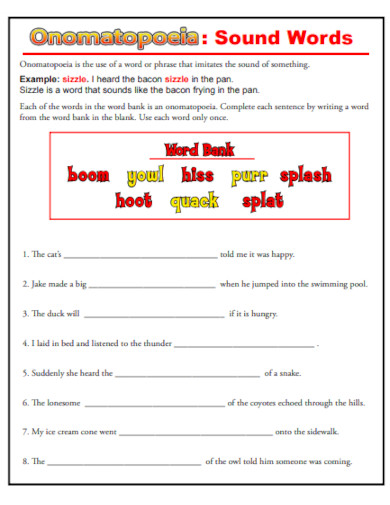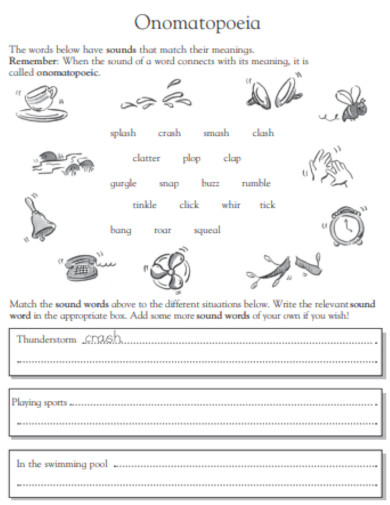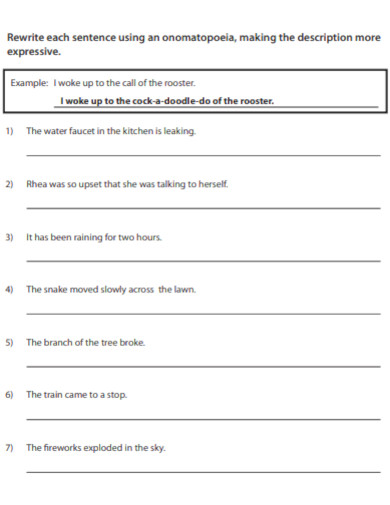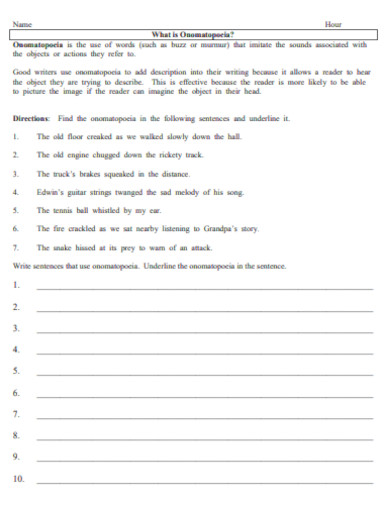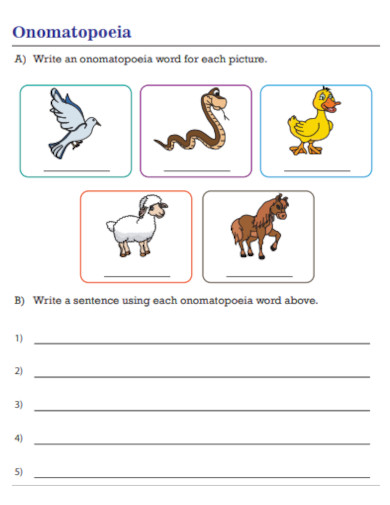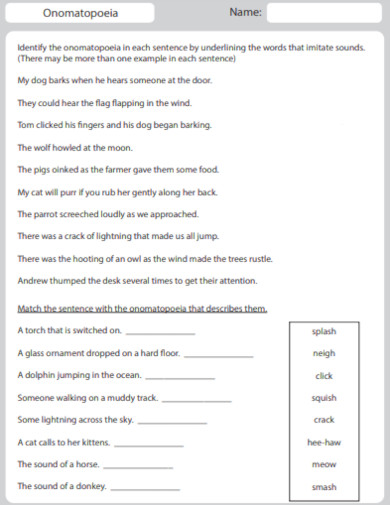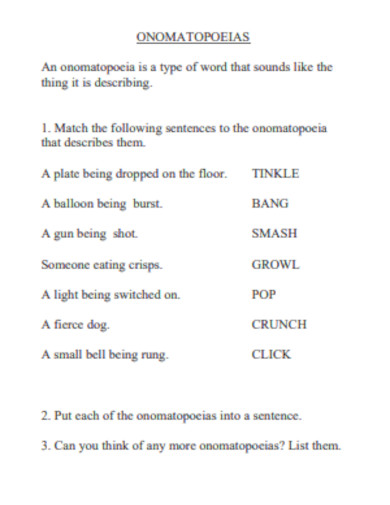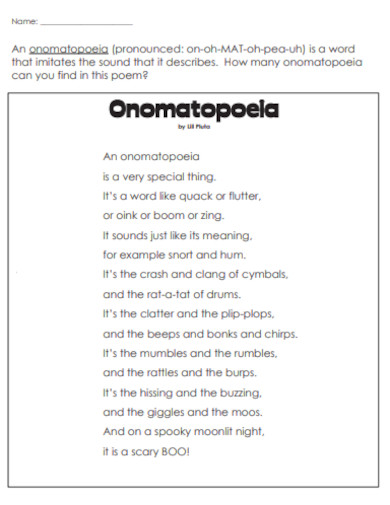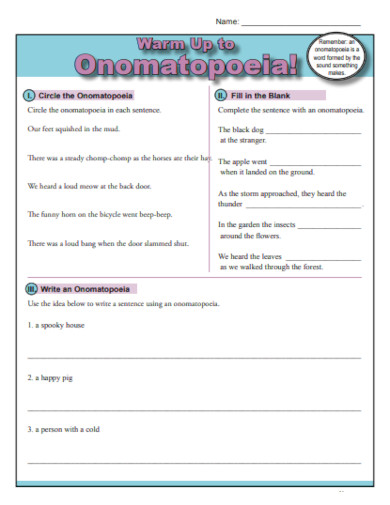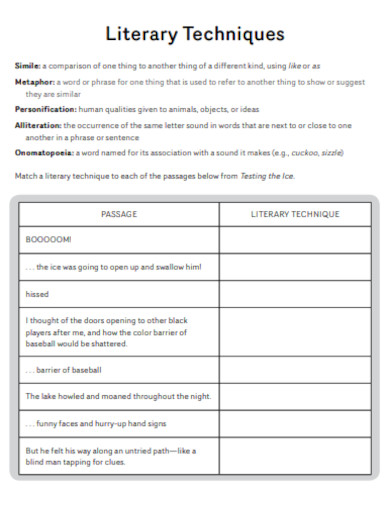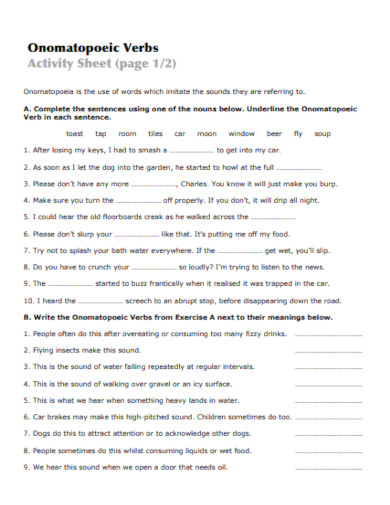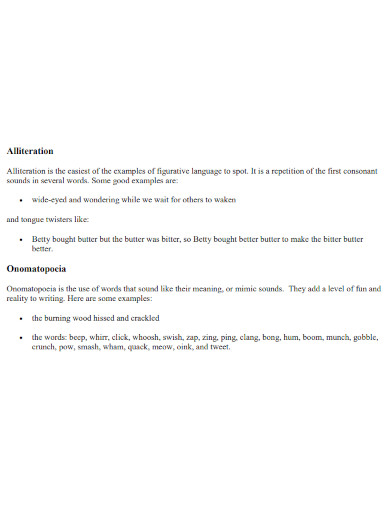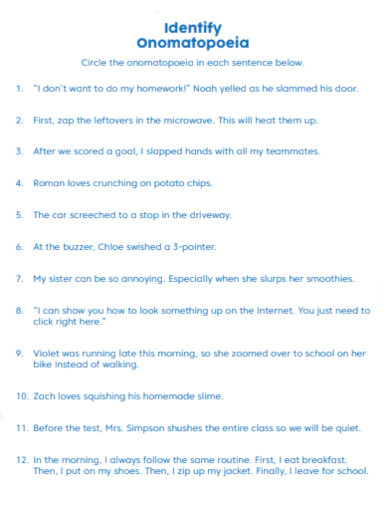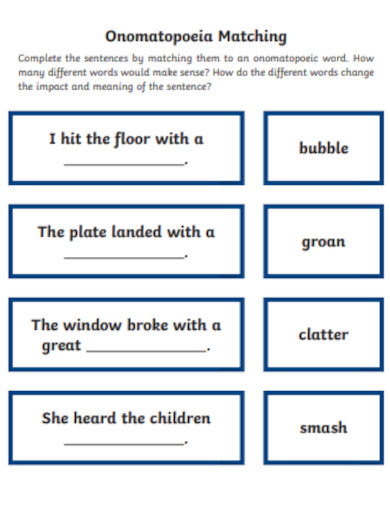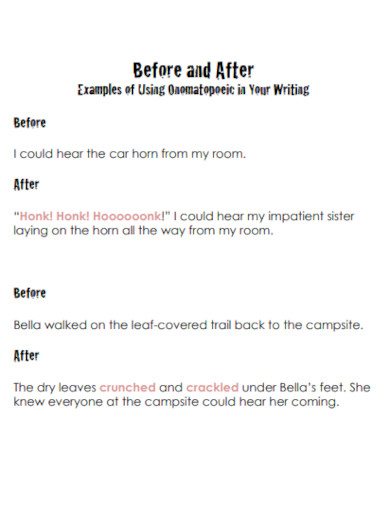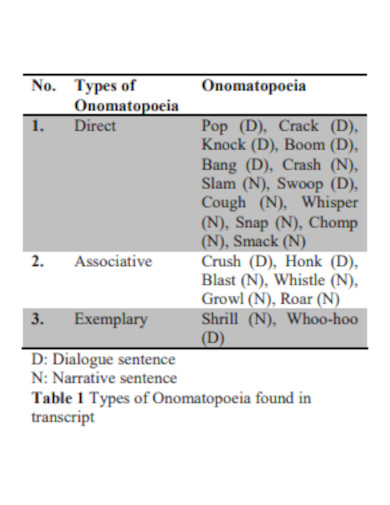14+ Onomatopoeia in Sentence Examples
When we were younger, our parents and teachers used to tell us about the different sounds that various objects and animals produce. Back then, it was all a part of a learning process to help us understand how the world works. But these days, these so-called “sounds” play an important role in speech, poetry, and other forms of literature in a number of ways.
It’s easy to recognize onomatopoeic words from a narrative, especially since the sound or rhythmic patterns made are usually familiar to us. For instance, a “meow” would be a sound that only cats make when they try to communicate. Like hyperbole expressions and various metaphor examples, this can help an author make a scene seem more realistic to an audience. And because words can often tell us what is happening, the use of onomatopoeia also helps us hear the sound of the words they reflect.

Onomatopoeia Sentences in Sound Words
Onomatopoeia Sentence Document
Onomatopoeia Sentence Rewrite Example
Onomatopoeia Sentence Example
Onomatopoeia Word Sentences Example
Onomatopoeia Sentence Worksheet
Sample Onomatopoeia Sentence Example
Basic Onomatopoeia in Sentences
School Onomatopoeia Sentence Example
Simple Onomatopoeia Sentence Template
Onomatopoeia in Sentence Activity Sheet
Basic Onomatopoeia in Sentence Example
Identify Onomatopoeia Sentences
Onomatopoeia Sentence Matching Template
Onomatopoeia in Sentence Writing
Movie Onomatopoeia in Sentence
What Is Onomatopoeia?
Onomatopoeia is a figurative term for a word or a group words that are used to imitate a sound produced when spoken aloud. It originates from the Greek words onem, which means “name”, and poiein, meaning “compose” or “make”. This literary device makes it seem like we can actually hear those sounds as we read through a written piece. However, keep in mind that onomatopoeia and interjections are two different concepts. While there are instances when onomatopoeic words may be used as an interjection, it’s not all the time that an interjection imitates sounds.
Poets and other writers like to use onomatopoeia to awaken a reader’s auditory senses when going through a written short narrative report. It’s an attempt to give sound to words, without actually “hearing” them.
How to write an Onomatopoeia
Onomatopoeia is a word that imitates the sound of the object or action it refers to. Writing onomatopoeia involves choosing words that sound like the actual sound they are representing. Here are some steps to help you write an onomatopoeia:
Step 1: Identify the sound
Think about the sound that you want to represent. For example, if you want to represent the sound of a cat meowing, you would identify the sound as “meow.”
Step 2: Experiment with words
Once you have identified the sound, experiment with words that imitate the sound. For example, for the sound of a cat meowing, you could try words like “mew,” “miaow,” or “purr.”.
Step 3: Choose the best word
Choose the word that best represents the sound you are trying to convey. Consider the context of the word and how it will be used in your writing.
Step 4: Use the word in your writing
Once you have chosen the onomatopoeic word, use it in your writing to convey the sound. For example, “The cat let out a loud meow as it climbed up the tree.”
FAQs
Can onomatopoeia be used in any type of writing?
Yes, onomatopoeia can be used in any type of writing, including poems, fiction, non-fiction, and even technical writing. It can be used to create vivid descriptions and add emphasis to a point.
How do I know if I’m using an onomatopoeic word correctly?
An onomatopoeic word should accurately represent the sound it is imitating. If the word sounds like the sound it is describing, it’s likely a good choice. It’s also important to consider the context of the word and whether it fits with the overall tone and style of your writing.
Is it necessary to use onomatopoeia in writing?
No, onomatopoeia is not necessary in writing, but it can be a useful tool for adding depth and texture to the text structure of your book or journal. It can also be used to create a more immersive reading experience for your audience.
In conclusion, onomatopoeia is a literary device that imitates the sounds of objects and actions. It can be used in any type of writing to create vivid descriptions and add emphasis to a point. When writing onomatopoeia, it’s important to accurately represent the sound being imitated and choose a word that fits with the context of your writing. Although not necessary, onomatopoeia can be a useful tool for creating a more immersive reading experience for your audience.




